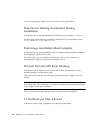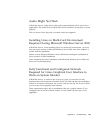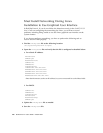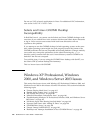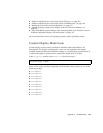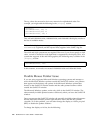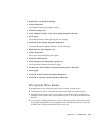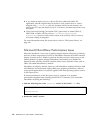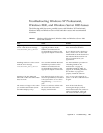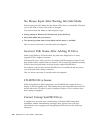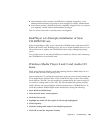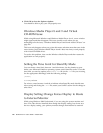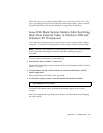
164 SunPCi III 3.2.1 User’s Guide • March 2004
The tag values do not need to be in any numerical or alphabetical order. For
example, you might add the following to the
[Display] section:
This will add 1280x960 16-bit, 1000x800 24-bit, and 1280x960 8-bit display modes to
the list of available modes.
Note – If the display does not support 8-bit graphics, an 8-bit entry (such as
CustomMode2) is ignored, and the rejected entry appears in the SunPCi log file.
The width and height parameters are required. However, if you do not specify a depth
value, a mode is created for each depth that is supported by the display. Thus, on a
system that supports 16-bit and 24-bit graphics, the following entry could be in the
[Display] section:
In this instance, two modes are created: 1200x1000 16-bit and 1200x1000 24-bit.
Double Mouse Pointer Issue
If you are using supported Microsoft Windows operating systems and attempt to
move the Microsoft Windows pointer outside the SunPCi III window, two pointers
then appear on the desktop: one pointer is the Microsoft Windows pointer that
freezes on the SunPCi III window border and the other pointer becomes visible
outside the SunPCi III window.
The Microsoft Windows pointer works only while in the SunPCi III window. The
other normally invisible pointer becomes visible only when you leave the SunPCi III
window.
Once you return to the SunPCi III window, the normally invisible pointer disappears
and the Microsoft Windows pointer again becomes active and the only pointer
viewable. To fix this problem, you can either change the display to 16 bits per pixel
(BPP) or disable the pointer shadows.
To change the display to 16 bits, do the following:
[Display]
CustomMode=1280, 960, 16
CustomMode4=1000,800, 24
CustomMode2=1280, 960, 8
CustomMode6=1200, 1000



